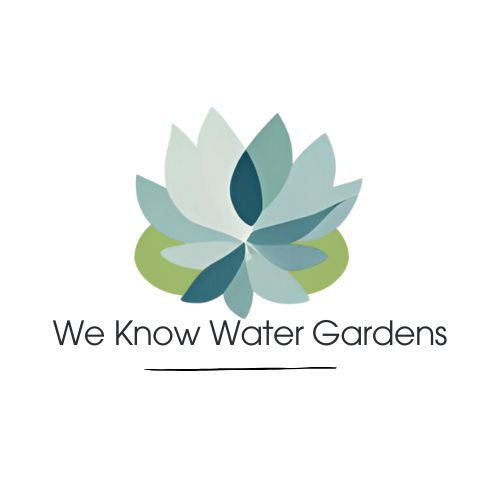Home
>
We Know Water Gardens Blog
>
Pond Filters 101: A Step-by-Step Guide to Making the Right Choice for Australian Conditions
Pond Filters 101: A Step-by-Step Guide to Making the Right Choice for Australian Conditions
on Jan 15, 2024

Looking to set up a beautiful and thriving pond in your backyard? One of the most important components you'll need to consider is a pond filter. In this comprehensive guide, we'll walk you through everything you need to know to make the right choice when it comes to pond filters for Australian conditions.
From understanding the different types of pond filters available to determining the right size and filtration capacity for your specific pond, we'll cover it all. No more confusion or guesswork - we'll provide you with a step-by-step breakdown of how to select the perfect pond filter for your needs.
By the end of this guide, you'll have a clear understanding of the benefits of different filter media, UV clarification, and biological filtration. You'll also learn about the essential maintenance requirements to keep your pond filter performing optimally.
Pond Filters 101 is your ultimate resource for making an educated choice when it comes to the heart of your pond's ecosystem. So, let's dive in and ensure your pond thrives for years to come.
Importance of pond filters
A pond filter plays a crucial role in maintaining the overall health and cleanliness of your pond. It is responsible for removing debris, harmful bacteria, and excess nutrients from the water, ensuring a balanced ecosystem for your aquatic plants and fish. Without a pond filter, your pond could quickly turn into a murky, stagnant mess.
A well-functioning pond filter not only keeps the water clean and clear but also promotes the growth of beneficial bacteria that help break down organic waste. These bacteria are essential for maintaining the delicate balance of your pond's ecosystem. Additionally, a pond filter helps prevent the buildup of harmful substances, such as ammonia and nitrates, which can be toxic to fish.
Investing in a high-quality pond filter can save you a lot of time and effort in the long run. It reduces the frequency of manual cleaning and ensures that your pond remains a healthy environment for aquatic life and the water remains clean and clear. Now that you understand the importance of pond filters, let's explore the different types available.
Types of pond filters - biological, mechanical, and UV filters
Biological Filters
Biological filters are designed to promote the growth of beneficial bacteria that break down organic waste in the pond. These filters contain a medium, such as bio-balls or foam blocks, which provide a large surface area for the bacteria to colonise. As the water passes through the filter, it comes into contact with the bacteria, which remove harmful substances and convert them into less toxic compounds that can be used by plants in the pond as a source of nutrient.
Biological filters are highly effective in maintaining water quality and are suitable for ponds with a moderate fish population. They are particularly useful for ponds with a heavy plant load, as the plants can benefit from the nutrients released by the bacteria.
Mechanical Filters
Mechanical filters are responsible for physically removing debris, such as leaves, , and other large particles, from the water. These filters typically consist of a series of screens or pads that trap the debris as the water flows through. Mechanical filters are ideal for ponds with a high amount of organic debris, as they minimise accumulating and decomposing in the pond.
While mechanical filters are excellent at removing solid waste, they do not provide the same level of water clarification as biological or UV filters. They should be used in conjunction with other types as this allows both UV and biological filters function more efficiently to achieve optimal water quality.
UVC Filters
UVC filters, also known as UV clarifiers or sterilisers, use ultraviolet light to kill algae and harmful bacteria in the water. These filters are particularly effective in controlling green water algae, which cause the water to turn murky and green. UV filters work by exposing the water to UV light as it passes through the filter. The light disrupts the DNA of the algae and bacteria, preventing them from reproducing.
UVC filters are a popular choice for ponds with persistent algae problems or a history of fish diseases. They can significantly improve water clarity and reduce the risk of algae blooms. However, UVC filters do not remove organic waste or debris, so they are often used in combination with biological or mechanical filters. Learn more here about UVC's, The Ultimate Guide to Ultra Violet Clarifiers: Enhancing Pond Health and Beauty
Now that you have a better understanding of the different types of pond filters, let's move on to the factors you need to consider when choosing the right filter for your pond.
Step 1: Assessing your pond's needs
Pond Size
The size of your pond plays a crucial role in determining the type and capacity of the filter you need. Larger ponds generally require more powerful filters to ensure adequate water circulation and filtration. On the other hand, smaller ponds may only need a compact filter that can handle the lower volume of water.
To determine the appropriate filter size for your pond, you'll need to consider the total water volume, including both the depth and surface area. It's essential to choose a filter that can handle the specific requirements of your pond to maintain optimal water quality.
Fish Population
The number and size of fish in your pond also impact the filter's capacity and performance. Fish produce waste, which can lead to an increase in ammonia and nitrate levels if not properly filtered. Overstocking your pond with fish can overwhelm the filter's ability to keep up with the waste production, resulting in poor water quality.
When selecting a pond filter, consider the number and size of your fish to ensure that the filter can handle the waste load. It's generally recommended to have a filter that can handle at least 50% more waste than your fish produce to maintain a healthy and balanced pond environment and to allow for future growth of the fish in both size and population.
Water Clarity
If your primary concern is water clarity, you'll need to choose a filter that can effectively remove suspended particles and algae. Mechanical filters and UV filters are the most effective in achieving crystal clear water. Some models even come with Clear water guarantees as they are so effective at clearing the water. However, it's important to note that water clarity should not be the sole focus when choosing a pond filter. The filter should also provide adequate biological filtration to maintain a healthy ecosystem.
Now that you understand the factors to consider let's move on to the step-by-step process of selecting the right pond filter for your needs.
Step 2: Researching different pond filter options
Before diving into the various filter options, it's essential to assess your pond's specific needs. Consider the size, fish population, and water clarity requirements to determine the type and capacity of the filter you need.
Start by measuring the dimensions of your pond, including the depth and surface area. This information will help you calculate the total water volume. Next, evaluate the number and size of fish in your pond. If you plan to add more fish in the future, take that into account as well.
Additionally, assess the water clarity. If your pond frequently experiences green water or excessive debris, you may need to prioritize mechanical or UVC filtration or for best practice a combination of both..
Step 3: Evaluating the filter's quality and durability
Now that you have a clear understanding of your pond's needs, it's time to research the different pond filter options available. Explore the features and benefits of each type of filter, including biological, mechanical, and UV filters.
Consider the specific advantages and limitations of each filter type and how well they align with your pond's requirements. Look for filters that offer a good balance between mechanical and biological filtration to maintain both water clarity and a healthy ecosystem.
Step 4: Considering the maintenance requirements and cost
When investing in a pond filter, it's crucial to choose one that is built to last. Evaluate the quality and durability of the filters you're considering. Look for filters made from sturdy materials that can withstand outdoor conditions and resist clogging.
If in doubt, email us and we would be happy to assist you!
It's generally advisable to opt for a slightly larger filter than the minimum recommended size. This allows for potential future growth in your pond or an increase in fish population.
Selecting the right pond filter for a healthy and clean pond
Before making a final decision, consider the maintenance requirements and cost associated with the filter you've chosen. Some filters may require more frequent cleaning or replacement of filter media, while others offer self-cleaning features or long-lasting components.
Additionally, factor in the initial cost of the filter and any ongoing expenses, such as replacement parts or UV bulbs. While it's important to consider your budget, remember that a high-quality filter is an investment in the long-term health and beauty of your pond.
Some filters are also easier then others to maintain. Pressurized filters that mount outside the pond are easy to work on , but need to be hidden as they maybe unsightly. Internal filters are easy to hide as they are submersed in the pond, but need to be removed when you want to clean them.
© weknowwatergardens 2024
Share




